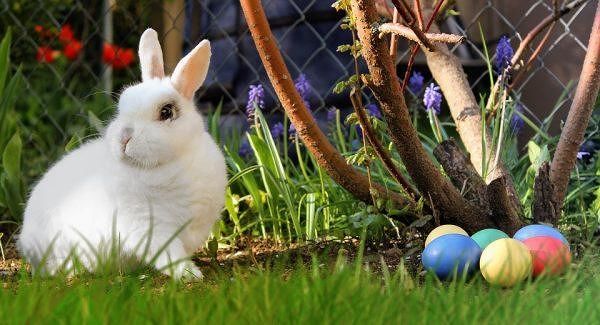Tema in inglese sulle vacanze di Pasqua
Ce l'abbiamo quasi fatta: le
vacanze di Pasqua sono alle porte e finalmente tutti gli studenti potranno godersi qualche giorno di relax. I vostri professori, tuttavia, non sono stati comprensivi e vi hanno riempito di compiti anche per queste brevi feste? Vi hanno assegnato un
tema sulla Pasqua in inglese, in particolar modo sul significato della festa e sui simboli?
Don’t worry: grazie alle nostre dritte, potrete finire i compiti velocemente e trascorrere delle belle giornate di ozio alla faccia dei prof! Ecco
un tema in inglese svolto sulla Pasqua da cui trarre spunto!
Più che di tema avete bisogno di frasi per fare gli auguri di buona Pasqua? Ecco come fare un figurone:
Non avete ancora ben capito quando sono e quanto durano le vacanze di Pasqua 2018? Chiaritevi ogni dubbio:

Tema in inglese sul significato della Pasqua: introduzione
Easter, like Christmas, is a consumerist bank holiday nowadays, together with Easter Monday (and Good Friday in the UK). Students and many workers take a break from school and work, people go on holiday or make trips, enjoying the spring weather, or gather with family and friends for a great lunch. Easter eggs, doves, Easter bunnies are just some of the many Easter symbols. However, what is the real meaning of Easter? In Christian countries, Easter has religious roots as it is the day where believers celebrate Jesus Christ’s Resurrection. According to the New Testament, Jesus died on the Cross on Friday (nowadays it is known as Good Friday) and then he resurrected on Sunday. On Easter Monday, instead, people remember the meeting between the Angel and the women in front of the sepulchre where Jesus was buried.
Tema sulla Pasqua in inglese svolto: svolgimento
Yet, Christian Easter is born in correspondence to the “Jewish Easter”, known in English as Passover, i.e. a Jewish festival commemorating the Jewish Exodus from slavery in Egypt. The Jewish word Pesah, meaning “passing through”, was used in Greek and Latin for the Christian celebration. The modern English term Easter, instead, cognate with modern Dutch ooster and German Oster, developed from an Old English word that is derived from the name of a goddess.
Many are the symbols associated to the Easter: why do we eat eggs and the lamb? Why are there Easter bunnies and candles? The Easter bunny, for instance, is a rabbit or hare: it represents a symbol of abundant new life in ancient times, and then it was associated with Jesus himself, as well as the lamb which represents Christ, “the Lamb of God”. Easter eggs and baby chicks symbolize new life as they have been a symbol of spring since ancient times; furthermore, eggs can represent the resurrection: the shell of the egg is a symbol of the rock tomb out of which Christ emerged when he arose again. The chick, instead, symbolises new life or re-birth.
While in Southern European countries another symbol of peace is the olive branch, in England palm branches are used in order to remember the day when Jesus arrived in Jerusalem on the first Palm Sunday and people waved palm branches, welcoming him.
Furthermore, in England, Easter Lilies are very popular as they symbolize the purity of Jesus and new life as well as the butterfly, whose whole life represents the life of Jesus Christ. The hot Cross Buns are a typical British Easter cake: they are spiced sweet bun made with currants or raisins, marked with a cross on the top, and traditionally eaten on Good Friday. The buns mark the end of Lent, indeed.
Tema sulla Pasqua in inglese: conclusione
Easter is a holiday celebrated in every Christian country and have an important religious meaning for the believers, even if symbols and traditions differ from country to country. Yet, Easter is a beautiful occasion for everyone to stay together with family and friends, relax, travel and discovering different traditions and way of celebrating Easter.
Tema sulle vacanze di Pasqua: tutte le tracce
Se invece siete alla ricerca di uno svolgimento sulla Pasqua e le sue tradizioni in italiano, allora leggete qui:
(Foto credits: Pixabay)
